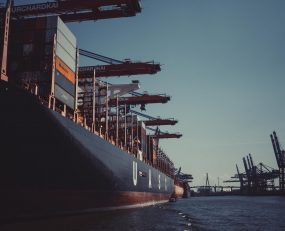
Chinese shipyards are becoming busy again after several years of distress and South Korean yards are experiencing something resembling a boom, with new orders at levels not seen for fifteen years.
Most of the large container lines are ordering new large vessels, with MSC just having confirmed an order for 13 mid-sized neo-post-panamax. These vessels seem to become popular, possibly as they complement the ultra-large vessels within a container shipping network. Yet the order book is still not yet huge in terms of the existing fleet, at around 15% of total fleet capacity.
The immediate prospect is that demand for container shipping services will be robust and is capable of absorbing the new capacity when it arrives, which may not be for several years. It is conventionally assumed that freight rates are driven by the balance of supply and demand in the shipping sector, so it might seem logical to assume that freight rates will not fall too heavily in the medium term.
However, looking at the flow of container traffic around the world at present this may not be the whole picture. Large parts of the container shipping network are stressed as a result of congestion. In particular, US ports, especially ports on the West Coast, are experiencing huge levels of demand for imports. Year-on-year Long Beach saw a 50% rise in containers for imports in contrast to export traffic which only grew by 4.9%. Overall, the port saw total volume of containers handled hit 700,000 TEUs, 109,945 TEUs higher than the previous high-point in 2018. It is worth noting that empty containers handled leapt by 69.6% to 278,563 TEUs. The port is struggling to cope with this imbalance and the indirect result is to drive up the cost of logistics for many shippers, not least expressed in terms of inventory management.
The reason is largely due to the imbalance in supply and demand between the US economy and much of the rest of the world, especially China. This results in a port such as Long Beach being overwhelmed by large quantities of low-value consumer goods being sucked into the US and very little flowing in the opposite direction.
Unless the container shipping network around the world is able to adapt to dramatic changes in traffic patterns, freight rates will be vulnerable to short-and-medium term inflation. Increasing the availability of ships will not solve this issue, indeed it might make it worse.
Source: Transport Intelligence, April 8, 2021
Author: Thomas Cullen
The Ti Dashboard has further data on US West Coast ports. The US: West Coast Ports chart shows container throughput by the number of TEUs handled by four major US West Coast ports each month. It can be found on the Sea Freight page of the Dashboard.